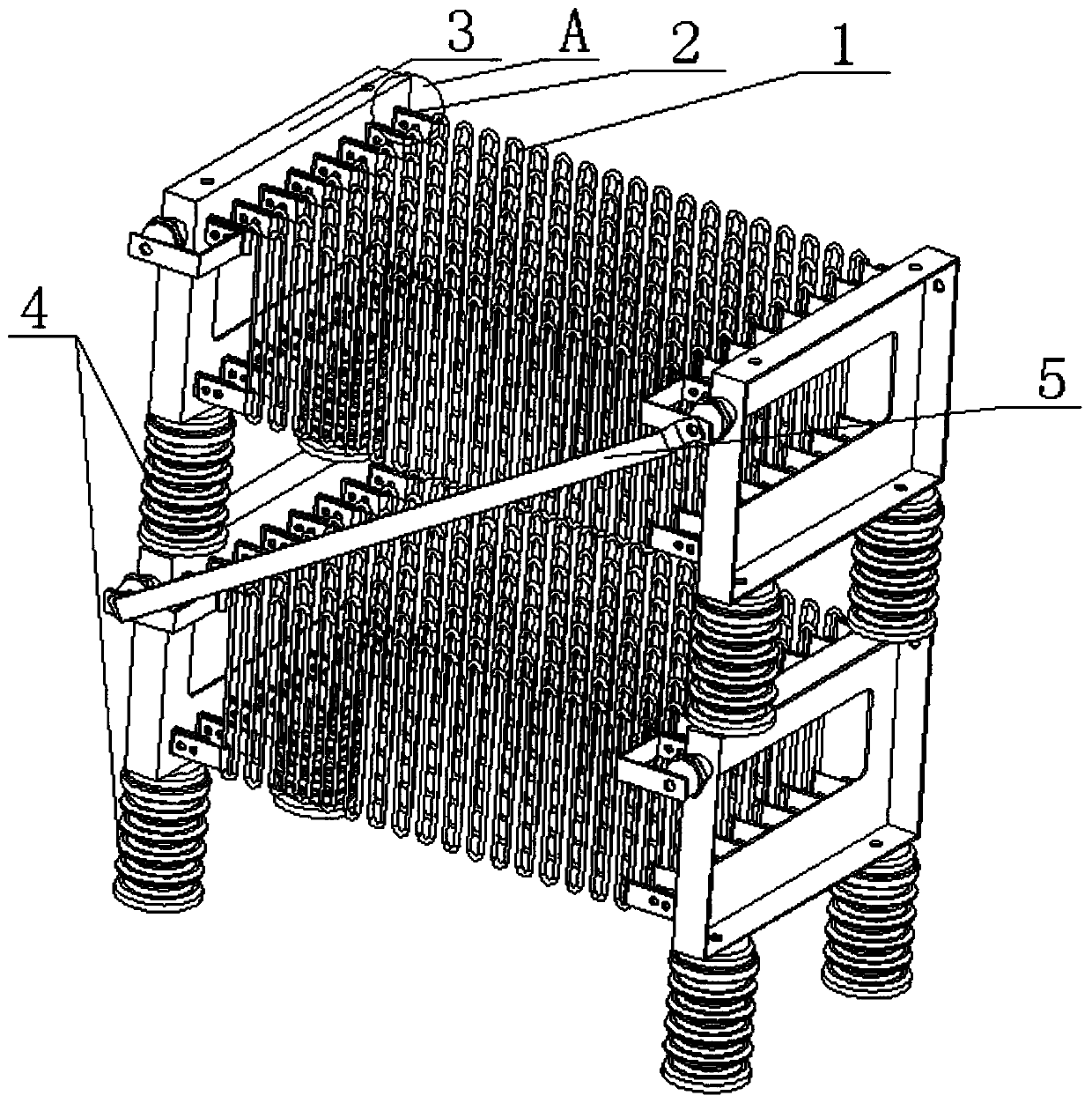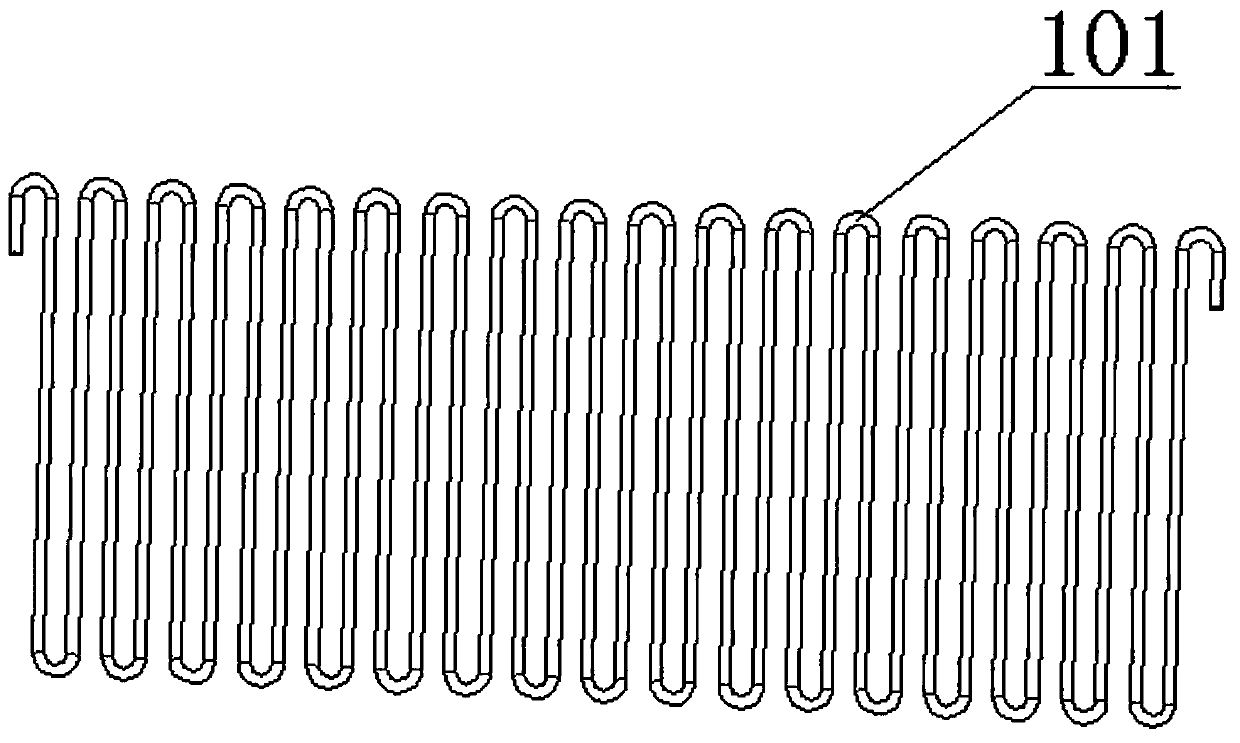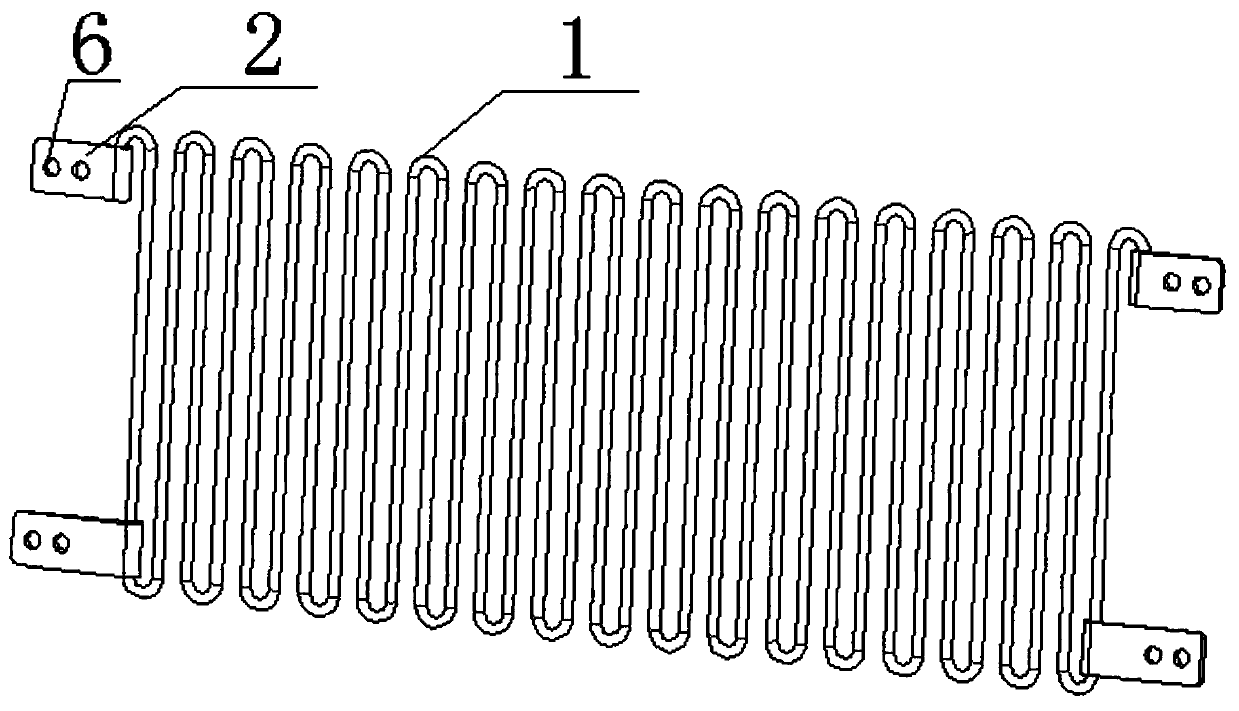High-voltage non-inductive resistor and manufacturing method thereof
A technology of non-inductive resistors and manufacturing methods, applied in resistors, resistor manufacturing, resistor components and other directions, can solve the problems of poor resistance to short-term inrush current, complex structure, large volume, etc., and achieve excellent anti-oxidation performance, High mechanical strength, the effect of improving mechanical strength
- Summary
- Abstract
- Description
- Claims
- Application Information
AI Technical Summary
Problems solved by technology
Method used
Image
Examples
Embodiment 1
[0031] As shown in the figure, the high-voltage non-inductive resistor includes a plurality of "S"-shaped resistors 1, and the resistors 1 are made of Ni20Cr80 and have a resistivity of 1.10×10 -6 The hollow nickel-chromium alloy tube 101 of Ω·m is bent. The outer diameter of the hollow nickel-chromium alloy tube 101 is 3.0mm and the inner diameter is 1.5mm. Argon-arc welding at the joint, stainless steel frames 3 are arranged on both sides of the resistance sheet 1, the connecting plate frame 7 is fixedly installed on the stainless steel frame 3, and the corresponding mounting holes 6 are set at the corresponding positions of the stainless steel connector 2 and the connecting plate frame 7, and the stainless steel The connector 2 is connected to the corresponding connecting plate frame 7 through the bolt 8 and the nut installed in the mounting hole 6, and the resistance sheet 1 is combined in series and in parallel to form at least two upper and lower adjacent ones according t...
Embodiment 2
[0039] The high-voltage non-inductive resistor, the "S"-shaped resistor sheet 1 is made of Ni20Cr80 with a resistivity of 1.14×10 -6 The hollow nickel-chromium alloy tube 101 of Ω·m is bent, and the other structures are the same as those described in Embodiment 1.
[0040] The manufacturing method of the above-mentioned high-voltage non-inductive resistor is shown in the figure, and the steps are as follows:
[0041] 1. Bend the hollow nickel-chromium alloy tube 101 to make an "S"-shaped resistor 1 according to the micro-induction requirements;
[0042] 2. The resistance sheet 1 after bending and forming is solid-solution treated at 1150°C as a whole, and after 10 minutes of heat preservation, it is water-cooled to dissolve the carbides in the nickel-chromium alloy and obtain single-phase austenite, and then at 950°C for 3 hours. aging treatment;
[0043] 3. After heat treatment, the upper and lower ends of both sides of the resistance sheet 1 are argon-arc welded with the sta...
Embodiment 3
[0046] The high-voltage non-inductive resistor, the "S"-shaped resistor sheet 1 is made of Ni20Cr80 with a resistivity of 1.12×10 -6 The hollow nickel-chromium alloy tube 101 of Ω·m is bent, and the other structures are the same as those described in Embodiment 1.
[0047] The manufacturing method of the above-mentioned high-voltage non-inductive resistor is shown in the figure, and the steps are as follows:
[0048] 1. Bend the hollow nickel-chromium alloy tube 101 into an "S"-shaped resistor 1 according to the micro-induction requirements;
[0049] 2. The resistance sheet 1 after bending and forming is solid-solution treated at 1060°C as a whole, and after 15 minutes of heat preservation, it is water-cooled to dissolve the carbides in the nickel-chromium alloy and obtain single-phase austenite, and then at 920°C for 3 hours. aging treatment;
[0050] 3. After heat treatment, the upper and lower ends of both sides of the resistance sheet 1 are argon-arc welded with the stai...
PUM
 Login to View More
Login to View More Abstract
Description
Claims
Application Information
 Login to View More
Login to View More - R&D
- Intellectual Property
- Life Sciences
- Materials
- Tech Scout
- Unparalleled Data Quality
- Higher Quality Content
- 60% Fewer Hallucinations
Browse by: Latest US Patents, China's latest patents, Technical Efficacy Thesaurus, Application Domain, Technology Topic, Popular Technical Reports.
© 2025 PatSnap. All rights reserved.Legal|Privacy policy|Modern Slavery Act Transparency Statement|Sitemap|About US| Contact US: help@patsnap.com



